
Osama Ibrahim
Directly upon graduation, I started my research career in 1999 in Egyptology. I then adopted an interdisciplinary approach to develop the Fayoum Region as a competitive, sustainable, community-driven ecotourism destination based on its rich cultural and natural heritage resources. I did my PhD in Tourism Guidance at the Faculty of Tourism and Hotels in Fayoum University in Egypt. I was granted a joint supervision scholarship funded by the Egyptian Government to conduct my PhD thesis in Cardiff School of Management (UWIC) in Cardiff, UK. Upon my arrival in Egypt in 2008, I was then impressively well-placed as a ‘Consultant of Fayoum Governorate for Tourism Development’ to make a significant contribution to heritage management, tourism development and wider socio-economic development in the region.
Academically, I contributed to the Faculty of Tourism and Hotels through teaching courses in all levels including undergraduate, postgraduate, and open learning; supervising MSc and PhD thesis; and transferring knowledge and experience to my fellow colleagues. Since my arrival in Egypt in 2008 I composed a research teamwork aiming to conduct proactive research on heritage and archaeology of the Fayoum which significantly contributed to the stream of science. Eventually, I was chosen as a reviewer of the topmost journal in the field of tourism 'Tourism Management'.
Furthermore, I am extremely proud of what I have achieved on a university level as a head of the International office; and as the coordinator of the international training ‘the Development of Ecotourism in Middle East Countries (DEMEC)’ funded by JICA Egypt. I also contributed to the development of the Faculty of Tourism and Hotels through a successful fund-hunting to ‘Establishing Web Site for Ecotourism in the Fayoum Using Information and Communication Technology (ICT) Applications", a project funded by USAID in 2004-2005. Since 2005, I used to be an ecotourism consultant and marketing expert in various projects. In 2011, I published my first international book entitled: 'Enhancing the Competitiveness of Ecotourism Destinations: The Fayoum Region in Egypt'. I was also the key person in establishing the faculty museum. I am also a certified ‘Professional Trainer’ from the National Center for Faculty and Leadership Development (NCFLD) since 2012.
In terms of Quality Assurance and Accreditation, I used to be the vice head of Quality Assurance Unit of the faculty of Tourism, Fayoum Uni. and an active member of building the faculty’s self study. I am also a team member chosen by Fayoum University Council to develop ‘University Strategy’. I have participated in developing both under and postgraduate academic programs. I even initiated one academic program entitled ‘Ecotourism Guidance’ (EGAP). I am also involved in a mega EU project ‘Education for Sustainable Development beyond the Campus’ (EduCamp) as a researcher and management board member to develop innovative teaching/learning strategies and assessment methods for Egyptian Ministry of Education. As, the Head of Fayoum University International Office, I am in charge of enhancing the university ranking and its academic reputation.
I am fond of traveling abroad to exchange knowledge and experience and develop international network; therefore I have been to Britain, Saudi Arabia, USA, Japan, Morocco, Spain, Austria, Portugal, Ireland, Germany, Belgium, Netherlands, Italy, Jordan, Turkey and France for different scientific purposes including: international conferences, seminars, meetings, trainings, visiting academic, and tourism.
Supervisors: Prof. Galal Said , Prof. Hany Helal, Prof. Abdul Halim Nur ElDin, Prof. Ahmed ElGohary, Prof. Awad Abbas, Prof. Hanaa Fayed, Prof. Khaled Hamza, Prof. Eleri Jones, Prof. Willeke Windrich, Prof. Paola Davoli, and Prof. Mario Capasso
Academically, I contributed to the Faculty of Tourism and Hotels through teaching courses in all levels including undergraduate, postgraduate, and open learning; supervising MSc and PhD thesis; and transferring knowledge and experience to my fellow colleagues. Since my arrival in Egypt in 2008 I composed a research teamwork aiming to conduct proactive research on heritage and archaeology of the Fayoum which significantly contributed to the stream of science. Eventually, I was chosen as a reviewer of the topmost journal in the field of tourism 'Tourism Management'.
Furthermore, I am extremely proud of what I have achieved on a university level as a head of the International office; and as the coordinator of the international training ‘the Development of Ecotourism in Middle East Countries (DEMEC)’ funded by JICA Egypt. I also contributed to the development of the Faculty of Tourism and Hotels through a successful fund-hunting to ‘Establishing Web Site for Ecotourism in the Fayoum Using Information and Communication Technology (ICT) Applications", a project funded by USAID in 2004-2005. Since 2005, I used to be an ecotourism consultant and marketing expert in various projects. In 2011, I published my first international book entitled: 'Enhancing the Competitiveness of Ecotourism Destinations: The Fayoum Region in Egypt'. I was also the key person in establishing the faculty museum. I am also a certified ‘Professional Trainer’ from the National Center for Faculty and Leadership Development (NCFLD) since 2012.
In terms of Quality Assurance and Accreditation, I used to be the vice head of Quality Assurance Unit of the faculty of Tourism, Fayoum Uni. and an active member of building the faculty’s self study. I am also a team member chosen by Fayoum University Council to develop ‘University Strategy’. I have participated in developing both under and postgraduate academic programs. I even initiated one academic program entitled ‘Ecotourism Guidance’ (EGAP). I am also involved in a mega EU project ‘Education for Sustainable Development beyond the Campus’ (EduCamp) as a researcher and management board member to develop innovative teaching/learning strategies and assessment methods for Egyptian Ministry of Education. As, the Head of Fayoum University International Office, I am in charge of enhancing the university ranking and its academic reputation.
I am fond of traveling abroad to exchange knowledge and experience and develop international network; therefore I have been to Britain, Saudi Arabia, USA, Japan, Morocco, Spain, Austria, Portugal, Ireland, Germany, Belgium, Netherlands, Italy, Jordan, Turkey and France for different scientific purposes including: international conferences, seminars, meetings, trainings, visiting academic, and tourism.
Supervisors: Prof. Galal Said , Prof. Hany Helal, Prof. Abdul Halim Nur ElDin, Prof. Ahmed ElGohary, Prof. Awad Abbas, Prof. Hanaa Fayed, Prof. Khaled Hamza, Prof. Eleri Jones, Prof. Willeke Windrich, Prof. Paola Davoli, and Prof. Mario Capasso
less
Related Authors
Emese Panyik
Universidade Católica Portuguesa
David Seamon
Kansas State University
Rune Nyord
Emory University
Ivan Ladynin
Moscow State University
Thomas Schneider
University of British Columbia
I Gusti Bagus Rai Utama
Universitas Dhyana Pura Bali
Bernard MATHIEU
Université Paul Valéry - Montpellier
Gianluca Miniaci
University of Pisa
John Coleman Darnell
Yale University
Jana Javornik
University of East London
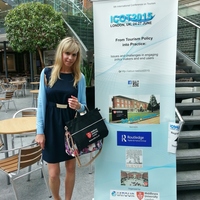

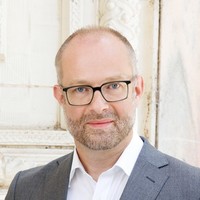
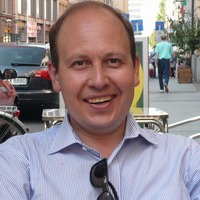

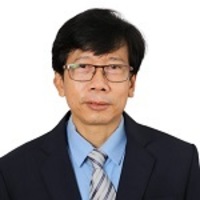
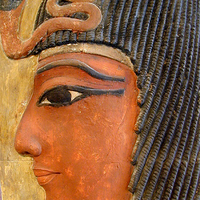



Uploads
Papers by Osama Ibrahim
The tomb is accessible through a vertical shaft in its eastern side, almost 1.5m deep, and ends with a staircase that leads to an open corridor (2m×1.10m). At the end of this corridor, the tomb entrance measures almost 1.30m×0.70m. It terminates into a main east-west rectangular chamber surrounded by six niches to house mummies (loculi), two at the northern, southern, and western sides. Two niches are at the top of the northern wall and one at the top of the western wall (Average 0.80m long×0.20m wide×0.30m deep).
The two anthropoid coffins under investigation of unknown male and female have been separated from their archaeological context by tomb robbers and coincidently rescued. The two coffins were restored and once preserved in Beni Suef Museum under the numbers 2612 and 2613 for male and female coffins respectively. Until recently in 2017, they were moved to the Grand Egyptian Museum under the numbers 65490 and 65489 respectively.
The texts are inscribed in vertical columns and occupy the central part of the two coffins. They are inscribed on yellow grounds and flanked with simple motives. Either coffins lost parts of their hieroglyphic texts but still in a reasonable state of preservation with vivid colors. The Coffins shroud mummies; the male one is wholly preserved while the female one is heavily decayed.
The tomb is accessible through a vertical shaft in its eastern side, almost 1.5m deep, and ends with a staircase that leads to an open corridor (2m×1.10m). At the end of this corridor, the tomb entrance measures almost 1.30m×0.70m. It terminates into a main east-west rectangular chamber surrounded by six niches to house mummies (loculi), two at the northern, southern, and western sides. Two niches are at the top of the northern wall and one at the top of the western wall (Average 0.80m long×0.20m wide×0.30m deep).
The two anthropoid coffins under investigation of unknown male and female have been separated from their archaeological context by tomb robbers and coincidently rescued. The two coffins were restored and once preserved in Beni Suef Museum under the numbers 2612 and 2613 for male and female coffins respectively. Until recently in 2017, they were moved to the Grand Egyptian Museum under the numbers 65490 and 65489 respectively.
The texts are inscribed in vertical columns and occupy the central part of the two coffins. They are inscribed on yellow grounds and flanked with simple motives. Either coffins lost parts of their hieroglyphic texts but still in a reasonable state of preservation with vivid colors. The Coffins shroud mummies; the male one is wholly preserved while the female one is heavily decayed.